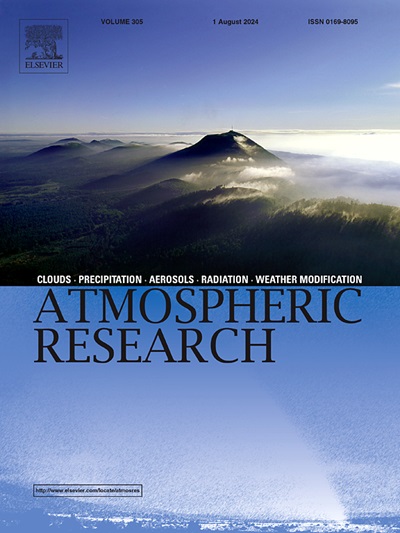Atmospheric deposition of dissolved organic carbon: Magnitude, spatiotemporal pattern and influencing factors
IF 4.5
2区 地球科学
Q1 METEOROLOGY & ATMOSPHERIC SCIENCES
引用次数: 0
Abstract
Atmospheric deposition of dissolved organic carbon (DOC) is not routinely measured in existing observation networks worldwide. This paucity of measurements prevents the comprehensive assessment of the global DOC budget in the atmosphere and is currently a barrier to understanding the vital role of the airborne DOC input to soil and water. In this study, 172 observations of atmospheric DOC deposition at the global scale published between 1985 and 2024 were compiled. Overall, the global geometric mean DOC concentration and flux were 2.03 ± 2.12 mg C L−1 and 18 kg C ha−1 yr−1, respectively, with a global budget of approximately 460 Tg C yr−1. While these values are comparable to those reported in previous global-scale studies, they differ across regions. Spatially, the DOC deposition fluxes observed in Africa, Central America, and South America were 2–7 times greater than those reported in North America, Europe, and Asia, which conforms with the spatial distribution of the annual precipitation in these regions, especially for an annual precipitation greater than 1400 mm. When the annual precipitation is less than 1400 mm, the spatial distribution of atmospheric DOC deposition is also influenced by emissions. Owing to the substantial decline in emissions, atmospheric DOC deposition has declined in North America, Asia, and especially in China over the past 10 years.

求助全文
约1分钟内获得全文
求助全文
来源期刊

Atmospheric Research
地学-气象与大气科学
CiteScore
9.40
自引率
10.90%
发文量
460
审稿时长
47 days
期刊介绍:
The journal publishes scientific papers (research papers, review articles, letters and notes) dealing with the part of the atmosphere where meteorological events occur. Attention is given to all processes extending from the earth surface to the tropopause, but special emphasis continues to be devoted to the physics of clouds, mesoscale meteorology and air pollution, i.e. atmospheric aerosols; microphysical processes; cloud dynamics and thermodynamics; numerical simulation, climatology, climate change and weather modification.
 求助内容:
求助内容: 应助结果提醒方式:
应助结果提醒方式:


